|
Books Should Be Free Loyal Books Free Public Domain Audiobooks & eBook Downloads |
|
|
Books Should Be Free Loyal Books Free Public Domain Audiobooks & eBook Downloads |
|
Fiction |
|---|
|
Book type:
Sort by:
View by:
|
By: James Thomson (1834-1882) | |
|---|---|
 Satires and Profanities
Satires and Profanities
"Believing as I do that James Thomson is, since Shelley, the most brilliant genius who has wielded a pen in the service of Freethought, I take a natural pride and pleasure in rescuing the following articles from burial in the great mausoleum of the periodical press. There will doubtless be a diversity of opinion as to their value. One critic, for instance, has called “The Story of a Famous Old Jewish Firm” a witless squib; but, on the other hand, the late Professor Clifford considered it a piece of exquisite mordant satire worthy of Swift... | |
 City of Dreadful Night and Other Poems
City of Dreadful Night and Other Poems
While primarily known for being pessimistic, the poetry of James Thomson is also beautiful and psychologically complex. This 1903 edition, varying as it does in selection from the edition of the same name published during his lifetime, provides a representative look at what has come to be known as his best works. The title poem is a horror-laced journey through depths that are surface level supernatural and at their heart an exploration of depression and atheist existential crisis. Subsequent works turn personal struggles into pure art and praise poets that have gone before. - Summary by MoonLylith | |
By: James Weldon Johnson (1871-1938) | |
|---|---|
 Autobiography of an Ex-Colored Man
Autobiography of an Ex-Colored Man
Johnson's only novel, The Autobiography of an Ex-Colored Man, was originally published anonymously in 1912. It is a fictional novel written as a memoir of an unnamed biracial narrator who grew up in the South during the Reconstruction and post-Reconstruction eras. It is a story in which the narrator relates how as a young boy he initially assumed that he was white, and how his notions of racial identity were suddenly turned upside down one day—how from that moment on he was inclined to view himself and the world about him from the perspective of blackness. The novel received very little notoriety until Johnson republished it in 1927, this time taking full credit as its author. | |
By: James Whitcomb Riley (1849-1916) | |
|---|---|
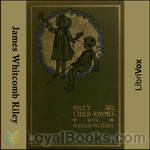 Selected Riley Child-Rhymes
Selected Riley Child-Rhymes
Riley was an American writer known as the “Hoosier poet”, and made a start writing newspaper verse in Hoosier dialect for the Indianapolis Journal in 1875. His favorite authors were Burns and Dickens. This collection of poems is a romanticized and mostly boy-centered paean to a 19th century rural American owning-class childhood. I’ve included the pieces I did because they’re the ones I most enjoyed when I read a copy of the collection handed down from my great-grandfather. | |
By: Jane Austen (1775-1817) | |
|---|---|
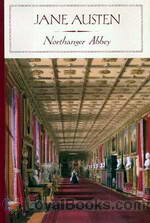 Northanger Abbey
Northanger Abbey
Jane Austen’s Northanger Abbey is a book about the life of Catherine Morland and her romantic relationships. The novel is divided into two parts; the first part begins with Catherine’s visit to Bath and her relationship with Henry Tilney and the other people she met there, and the second part starts with the arrival of Frederick Tilney and her visit to Northanger Abbey. This book alongside Pride and Prejudice and Sense and Sensibility is considered one of the major works of Jane Austen. The novel had undergone many revisions before its publication and it was even originally titled “Catherine... | |
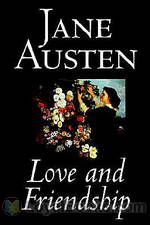 Love and Friendship
Love and Friendship
Begun when she was just eleven years old, Love and Friendship is one of Jane Austen's stories that very few readers may have encountered before. Austen experts feel that this story was written, like many others, only for the pleasure of her family and friends. It is scribbled across three notebooks, in childish handwriting, and the complete work is thought to have been written over a period of six or seven years. It is dedicated to one of her cousins, whom she was very close to, Eliza de Feuillide... | |
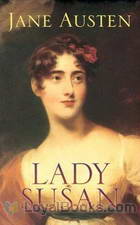 Lady Susan
Lady Susan
An epistolary novel, Lady Susan is an early work by Austen that was posthumously published in 1871. The short novel focuses on the self-serving eponymous anti-heroine, as she cunningly maneuvers her way through society in search of a wealthy husband for both her daughter and herself. Disregarding anything but her own selfish goals, Susan employs her charms to lure men and draw them into her web of deceit, no matter their age or status. Exploring issues including morals, manners, self-indulgence, malevolence, and social machinations, the relatively short novel is sure to fascinate with its atypical form... | |
 The Watsons
The Watsons
This fragment of a novel was written by Jane Austen in 1804 and remained untitled and unpublished until her nephew James Edward Austen-Leigh printed it in his A Memoir of Jane Austen in 1871. The title is from him. Mr Watson is a widowed clergyman with two sons and four daughters. The youngest daughter, Emma, has been brought up by a wealthy aunt and is consequently better educated and more refined than her sisters. But when her aunt contracts a foolish second marriage, Emma is obliged to return to her father’s house. There she is chagrined by the crude and reckless husband-hunting of two of her twenty-something sisters. | |
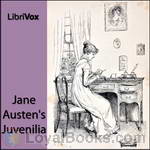 Jane Austen's Juvenilia
Jane Austen's Juvenilia
Before becoming the author of such classics as Sense and Sensibility, Pride and Prejudice, and Emma, Jane Austen experimented with various writing styles as a teenager in the early 1790s. This is a collection of her juvenilia, including the epistolary novels Love and Freindship, Lesley Castle, and Lady Susan, as well as her comic History of England and some shorter pieces. (Summary by Elizabeth Klett) | |
 Love and Freindship, and Other Early Works
Love and Freindship, and Other Early Works
This book draws together some of Jane Austen's earliest literary efforts. It includes "Love & Freindship" and "Lesley Castle" both told through the medium of letters written by the characters. It also contains her wonderful "History of England" and a "Collection of Letters" and lastly a chapter containing "Scraps". In these offerings, we may see the beginnings of Miss Austen's literary style. We may also discern traces of characters that we encounter in her later works. G. K. Chesterton in his preface, for example, says of a passage in Love and Freindship; "... | |
By: Jane Barlow (1857-1917) | |
|---|---|
 Strangers at Lisconnel
Strangers at Lisconnel
Strangers at Lisconnel is a sequel to Jane Barlow’s Irish Idylls. The locations and most of the characters are common to both. There is great humor and concomitantly a certain melancholy in most of these stories of the most rural of rural places in Ireland. Although of a higher social class than her characters, Our Jane seems to have a touch of softness in her heart for their utter simplicity, abject poverty and naiveté. From the following brief example of dialogue, can be seen that Ms Barlow could only have come to write these words after having heard them countless times in person: Mrs... | |
 Irish Idylls
Irish Idylls
Irish Idylls is a collection of short stories about Irish peasantry during the 19th Century. Ms Jane Barlow, an Irish lass, having, unbelievably, an uncertain date of birth, has a turn of phrase that delights and simultaneously enmeshes the reader/listener with compassion for her tableau. She captures the tune and lilt of dialogue so delightfully. A tiny sample: "So, by hook or by crook, Lisconnel holds together from year to year, with no particular prospect of changes; though it would be safe enough to prophesy that should any occur, they will tend towards the falling in of derelict roofs, and the growth of weeds round deserted hearthstones and crumbling walls... | |
By: Jane C. Loudon (1807-1858) | |
|---|---|
 Mummy! A Tale of the Twenty-Second Century
Mummy! A Tale of the Twenty-Second Century
The Mummy!: Or a Tale of the Twenty-Second Century is about a wise Egyptian mummy who is reanimated far in the future. With a different take on what lies ahead for civilization inspired from the exciting developments of the era, it is a strange, entertaining story and an early science fiction work by a woman novelist. | |
By: Jane D. Abbott (1881-1968) | |
|---|---|
 Highacres (Dramatic Reading)
Highacres (Dramatic Reading)
The story of a young mountain girl and her first year of city living and going to a high school. She knows nothing of town life, but she had dreams and longs to learn more and discover what the world is like outside of her mountain home. Go with her to the Westley's home, where she finds everyone kind, except the Wesley's oldest daughter, Isobel, who is proud and snubs her. With determination, and courage she enjoys her first year, and longs to continue at Highacres. | |
By: Jane Porter (1776-1850) | |
|---|---|
 The Scottish Chiefs
The Scottish Chiefs
An adventure novel about William Wallace, one of the most popular books ever written by Jane Porter. The French version was even banned by Napoleon, and the book has remained very popular with Scottish children, but is equally enjoyable for adults. | |
By: Jaques Futrelle (1875-1912) | |
|---|---|
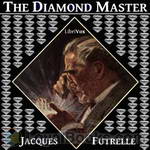 The Diamond Master
The Diamond Master
A perfect diamond worth millions is mailed, in a plain package, to a diamond dealer. Then he finds that identical diamonds were delivered to other diamond dealers. Where did the gems come from? Who sent them? And why? (Introduction by Dawn) | |
By: Jean de La Fontaine (1621-1695) | |
|---|---|
 Fables in Rhyme for Little Folks
Fables in Rhyme for Little Folks
Several of La Fontaine’s fables, translated into English by W. T. Larned. | |
By: Jean Ingelow (1820-1897) | |
|---|---|
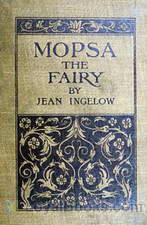 Mopsa the Fairy
Mopsa the Fairy
Jean Ingelow (1820 – 1897) was one of the more famous poets of the period, indeed many people suggested that she should succeed Alfred, Lord Tennyson as the first female Poet Laureate when he died in 1892. Mopsa the Fairy, written in 1869 is one of her more enduring stories. It is a delightful fantasy about a young boy who discovers a nest of young fairies and tells of their adventures together. | |
By: Jean M. Thompson (1865-?) | |
|---|---|
 Three Bears of Porcupine Ridge
Three Bears of Porcupine Ridge
Twenty-four delightful tales for children. Meet Timothy Mouse, Little Red Doe, Dame Woodchuck, King Moose and Unk-Wunk the Porcupine with their friends. Adventure and humor are skillfully wrapped around these lovable characters. | |
By: Jean Webster (1867-1916) | |
|---|---|
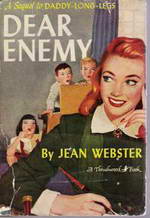 Dear Enemy
Dear Enemy
Dear Enemy is the sequel to Jean Webster’s novel Daddy-Long-Legs. The story as presented in a series of letters written by Sallie McBride, Judy Abbott’s college mate in Daddy-Long-Legs. Among the recipients of the letters are the president of the orphanage where Sallie is filling in until a new director can be installed, his wife (Judy Abbott of Daddy-Long-Legs), and the orphanage’s doctor (to whom Sallie addresses her letters: “Dear Enemy”). | |
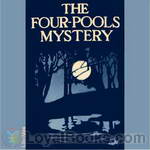 The Four-Pools Mystery
The Four-Pools Mystery
In The Four Pools Mystery the tyrannical plantation owner is deemed responsible for his own murder because of his mistreatment of the former slaves who continued in his employment after the war. Jean Webster (pseudonym for Alice Jane Chandler Webster) was born July 24, 1876 and died June 11, 1916. She was an American writer and author of many books including Daddy-Long-Legs and Dear Enemy. (Wiki) | |
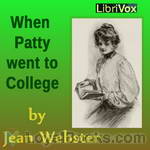 When Patty Went to College
When Patty Went to College
When Patty Went to College is Jean Webster's first novel, published in 1903. It is a humorous look at life in an all-girls college at the turn of the 20th century. Patty Wyatt, the protagonist of this story is a bright, fun loving, imperturbable girl who does not like to conform. The book describes her many escapades on campus during her senior year at college. Patty enjoys life on campus and uses her energies in playing pranks and for the entertainment of herself and her friends. An intelligent girl, she uses creative methods to study only as much as she feels necessary... | |
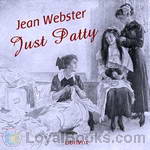 Just Patty
Just Patty
Patty, Conny, and Priscilla are the best of friends, and roommates at boarding school. While the teachers might say they are mischievous, even troublemakers, Patty and her friends act only in accordance with their convictions. From forming a labor union to furnishing a house for the neighbors, Patty's ideas are unconventional, yet loads of fun. Just Patty is the prequel to When Patty Went to College, the first novel by the author of Daddy-Long-Legs and Dear Enemy. | |
 Jerry
Jerry
Jerry is the humorous story of a young man's attempt to win his lady. Jerry is waiting for his friends at a hotel in Italy, and is bored and lonely. When he hears that a beautiful American lady, Constance Wilder, is staying nearby, he tries to visit her. After an awkward first meeting, he tries to catch her attention by pretending to be a peasant tour guide. She recognizes him for what he is, but pretends not to, and a lively charade is carried on as they tease and fall in love. A clean, sweet, funny historical fiction/romance. | |
By: Jean-Jacques Rousseau (1712-1778) | |
|---|---|
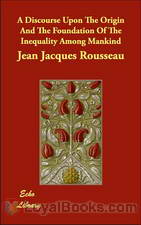 A Discourse Upon the Origin and the Foundation of the Inequality Among Mankind
A Discourse Upon the Origin and the Foundation of the Inequality Among Mankind
This work presents Rousseau’s belief in the profoundly transformational effects of the development of civilization on human nature, which Rousseau claims other political philosophers had failed to grasp. Specifically, before the onset of civilization, according to Rousseau, natural man lived a contented, solitary life, naturally good and happy. It is only with the onset of civilization, Rousseau claims, that humans become social beings, and, concomitant with their civilization, natural man becomes corrupted with the social vices of pride, vanity, greed and servility. | |
By: Jeff Sutton (1913-1979) | |
|---|---|
 First on the Moon
First on the Moon
The four men had been scrutinized, watched, investigated, and intensively trained for more than a year. They were the best men to be found for that first, all-important flight to the Moon--the pioneer manned rocket that would give either the East or the West control over the Earth.Yet when the race started, Adam Crag found that he had a saboteur among his crew ... a traitor! Such a man could give the Reds possession of Luna, and thereby dominate the world it circled.Any one of the other three could... | |
By: Jeffery Farnol (1878-1952) | |
|---|---|
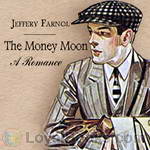 The Money Moon: A Romance
The Money Moon: A Romance
The Money Moon is a light-hearted romance. Jilted in love, our American millionaire hero, George Bellow, takes a walking tour of the Kent countryside to overcome the “Haunting Spectre of the Might Have Been”. Along the way he makes friends with a young boy out to discover a fortune to save his Aunt Anthea from having to sell the family estate and George discovers his ideal “Arcadia” and true love. | |
By: Jennette Lee (1860-1951) | |
|---|---|
 Green Jacket
Green Jacket
An early example of the female private detective, Jennette Lee’s Millicent Newberry made her first appearance in The Green Jacket in 1917 and was also featured in two later books, The Mysterious Office in 1922 and Dead Right in 1925. Miss Newberry brings her own unique perspective to her cases, only accepting those where she has a say in what happens to the guilty party. She is rarely without her knitting, using it as a technique to put clients and suspects alike at ease, while also knitting... | |
By: Jennie Hall (1875-1921) | |
|---|---|
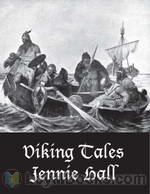 Viking Tales
Viking Tales
Viking tales are tales from Iceland, featuring the king Halfdan and his son Harald. | |
By: Jerome K. Jerome (1859-1927) | |
|---|---|
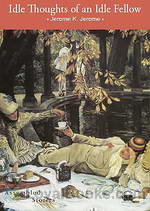 Idle Thoughts of an Idle Fellow
Idle Thoughts of an Idle Fellow
Idle Thoughts of an Idle Fellow, published in 1886, is a collection of humorous essays by Jerome K. Jerome. It was the author’s second published book and helped establish him as a leading English humorist. The book consists of 14 independent articles arranged by themes. | |
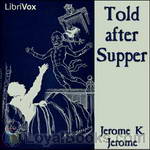 Told after Supper
Told after Supper
It is Christmas Eve, and the narrator, his uncle and sundry other local characters are sitting round the fire drinking copious quantities of whisky punch and telling ghost stories until bedtime, when… But no, I won’t spoil the fun. This is a little gem: Jerome at his tongue-in-cheek best. | |
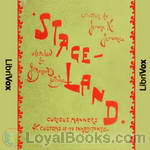 Stage Land
Stage Land
A comic look at the curious habits and customs of the inhabitants of ‘Stage Land’. Dedicated to ‘that highly respectable but unnecessarily retiring individual, of whom we hear so much but see so little, “the earnest student of drama” | |